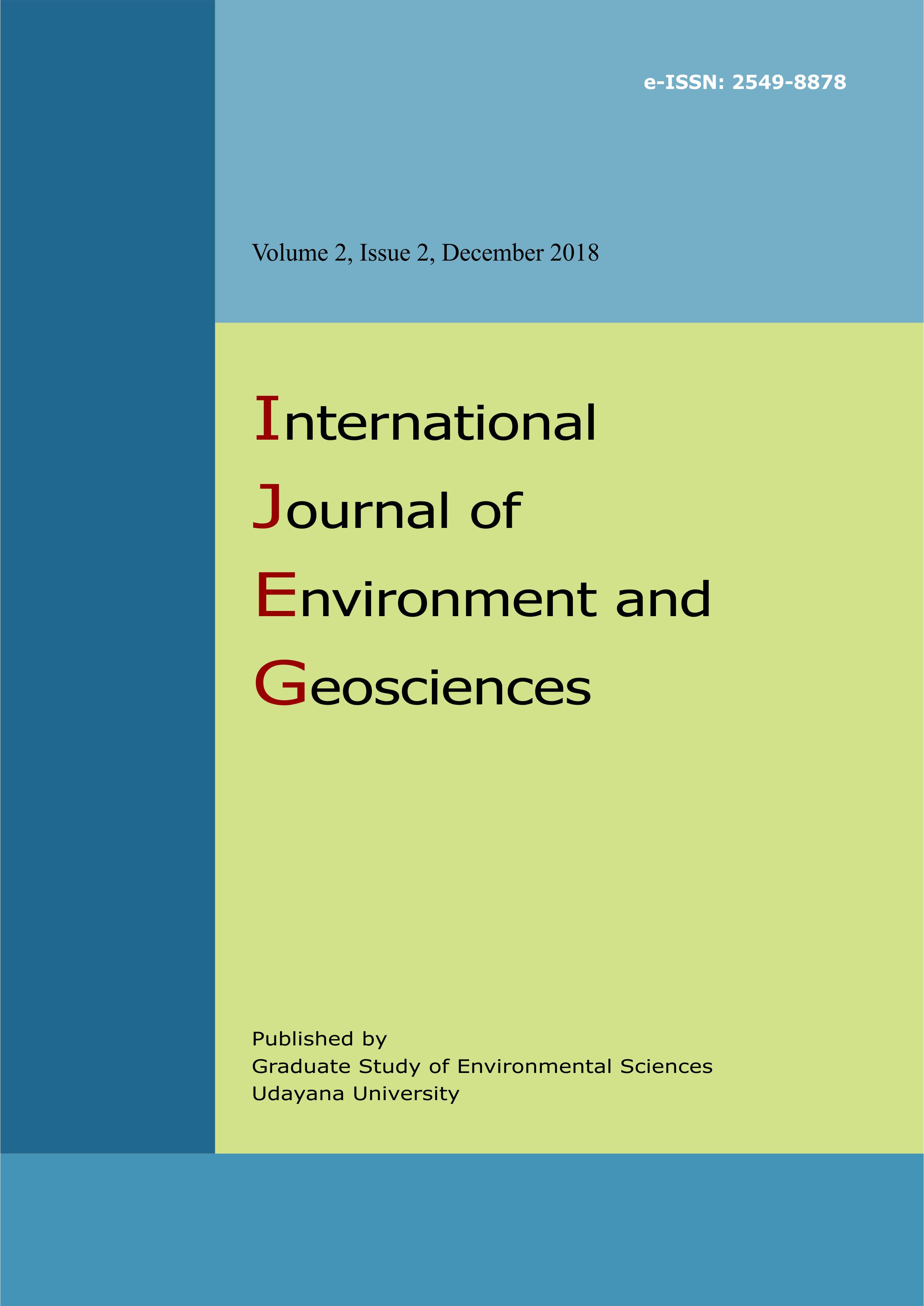Estimation of Carbon Sequestration in Tropical Peat Swamp Forest in Central Kalimantan Using Satellite Based on Primary Productivity
Abstract
One of approach that can be used to estimate the carbon sequestration by vegetation is to calculate the Gross Primary Productivity (GPP) in Central Kalimantan. GPP is total carbon that can be absorbed by vegetation to be used in the process of photosynthesis. The purpose of this study is to estimate the value of GPP using Vegetation Photosynthesis and Respiration Model (VPRM) and analyze the data comparison between GPP value data derived from flux tower and GPP value data from MODIS data. The field data from flux tower was taken by Hirano et al. (2007) from January 1, 2004 to December 31, 2005. The MODIS data is used MODIS Surface Reflectance Level 3 data year 2004 to 2005. According to the result of this study, the maximum GPP value year 2004 and 2005 showed 302.365 gC m-2 per month (February 2004) and 366.841 gC m-2 per month (June 2005). The minimum GPP value year 2004 and 2005 was 166.003 gC m-2 per month (November 2004) and 187.663 gC m-2 per month (March 2005). The total value of GPP in year 2004 was 1,134.231 gC m-2 yr-1 and in year 2005 the value was 1,109.001 gC m-2 yr-1. The correlation coefficient between GPP value from flux tower and GPP value from MODIS – VPRM showed in dry season, r = 0.766 and in rainy season, r = 0,839.
Downloads
Authors who publish with this journal agree to the following terms:
- All articles published by International Journal of Environment and Geosciences (IJEG) and Graduate Study of Environmental Sciences, Udayana University are made available under an open access license worldwide immediately. This means everyone has free and unlimited access to the full-text of all articles published in International Journal of Environment and Geosciences (IJEG), and everyone is free to re-use the published material given proper accreditation/citation of the original publication. Open access publication is supported by authors' institutes or research funding agency by payment of a comparatively article processing charge for accepted articles (See Author Fees). International Journal of Environment and Geosciences (IJEG) and Graduate Study of Environmental Sciences, Udayana University publish articles under the Creative Commons Attribution License.
- Authors are able to enter into separate, additional contractual arrangements for the non-exclusive distribution of the journal's published version of the work (e.g., post it to an institutional repository or publish it in a book), with an acknowledgement of its initial publication in this journal.
- Authors are permitted and encouraged to post their work online (e.g., in institutional repositories or on their website) prior to and during the submission process, as it can lead to productive exchanges, as well as earlier and greater citation of published work (See The Effect of Open Access).





